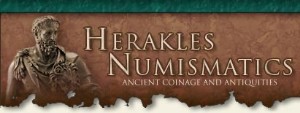
|
Herakles Numismatics
Total visits: 2167 This week: 19
 Additional Information
Welcome to Herakles Numismatics, Inc.
Show Schedule
Jan 08 to Jan 11, 2026
Florida United Numismatists Annual
Orlando, FL
Jan 31 to Feb 01, 2026
Vienna Coin and Stamp Show
Vienna, VA
Feb 13 to Feb 14, 2026
Charlotte Coin Club - 56th Annual 2-Day Convention
Charlotte, NC
Feb 20 to Feb 22, 2026
56th Upstate SC Coin Show
Spartanburg, SC
Apr 11 to Apr 12, 2026
The Lower Cape Fear Coin Club's Azalea Festival Coin Show
Wilmington, NC
Apr 18 to Apr 19, 2026
Vienna Coin and Stamp Show
Vienna, VA
Jun 26 to Jun 28, 2026
Raleigh Money Expo
Raleigh, NC
Aug 05 to Aug 08, 2026
Missouri Numismatic Society 66th Annual Coin Show and Scotsman Auction
St. Charles, MO
Aug 08 to Aug 09, 2026
Vienna Coin and Stamp Show
Vienna, VA
Oct 01 to Oct 04, 2026
NCNA Annual Convention & Coin Show
Concord, NC
Oct 17 to Oct 18, 2026
Vienna Coin and Stamp Show
Vienna, VA
Oct 29 to Oct 31, 2026
2026 South Carolina Numismatic Association 54th Annual Convention
Greenville, SC
|